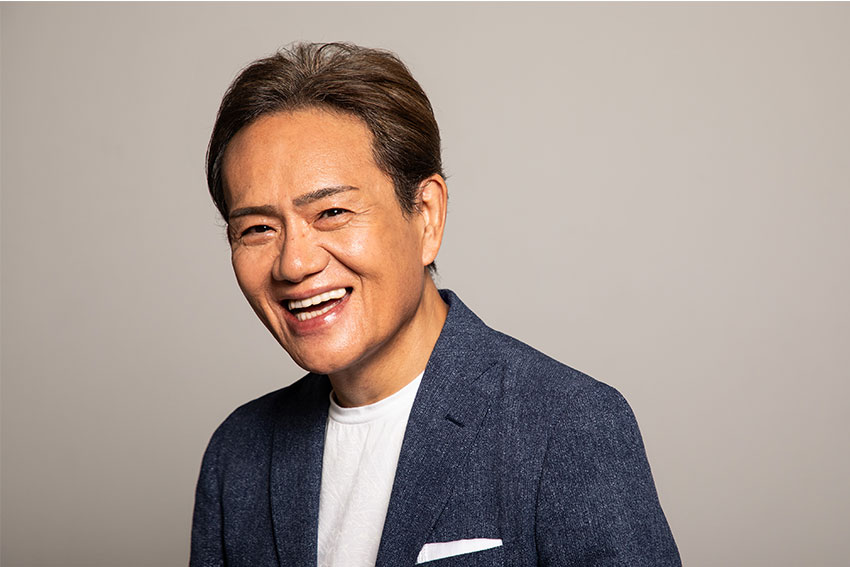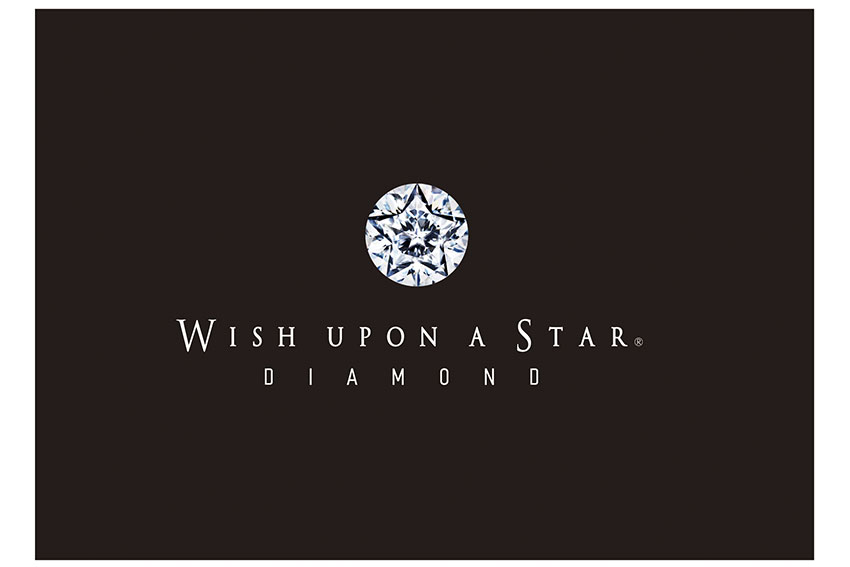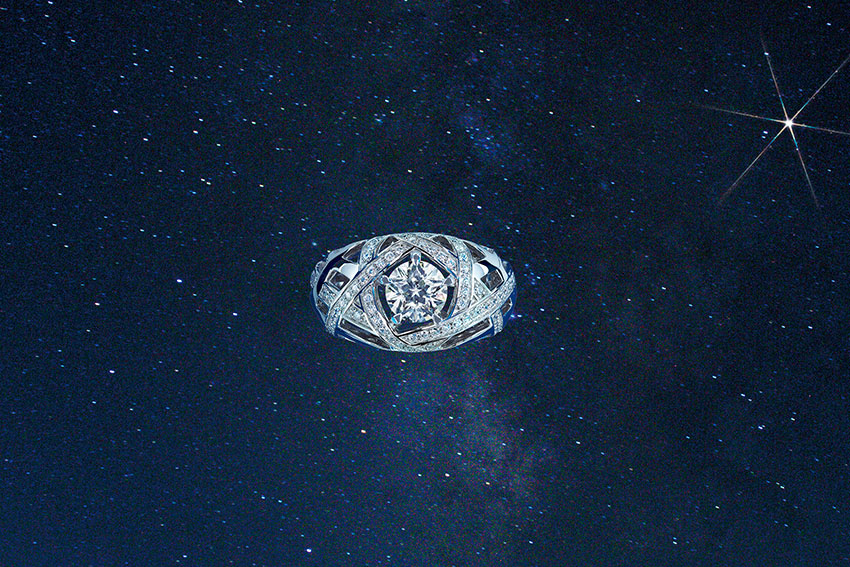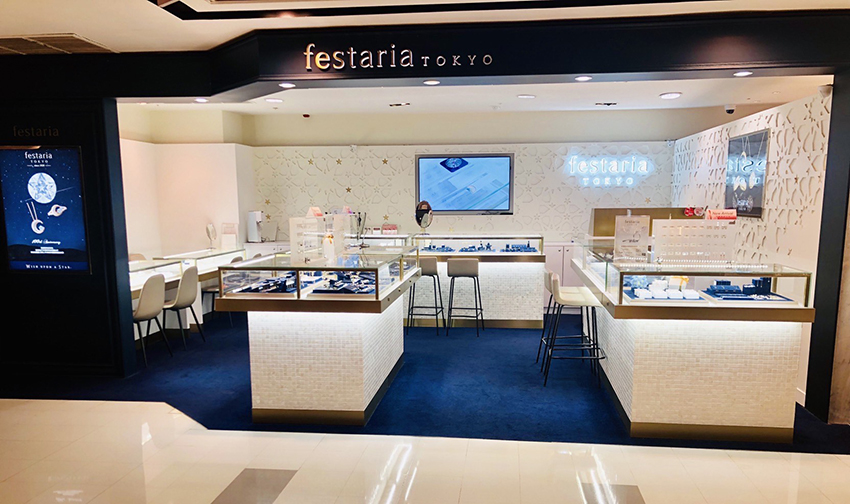Inspired by stars that grant wishes, Festaria Holdings turns dreams into reality for its loyal customers.

To begin, could you please introduce Festaria Holdings and share some of the key elements that define your business and operations?
My grandfather started this company in 1920. He was an artisan, so craftsmanship is deeply rooted in our company’s DNA. Innovation is our motivation, and we focus on continually creating something new. In the jewelry industry, we are known as a company that consistently produces unique and interesting products and ideas.
Almost 20 years ago, we established a factory in Vietnam for two key reasons. First, Vietnam is centrally located in Southeast Asia, which allows us to easily expand across the region. Second, while Kofu city in Yamanashi Prefecture has long been home to many skilled artisans, the number of young people entering the field has declined. As a result, the artisan population is aging. Even if Japanese technology is world-class, we face challenges if there are no younger generations to pass it on to. In Vietnam, there are many young, motivated individuals, so we decided to transfer our technology there.
Over the past 20 years, we’ve sent artisans from Kofu to Vietnam and welcomed Vietnamese trainees to Japan. Unlike most companies that build factories in Vietnam to reduce costs, our goal from the beginning was to produce high-quality products. We invested significantly to transfer our expertise and maintain craftsmanship standards. As a result, thanks to our Vietnamese factory, we won the annual buyers' show award—voted on by department store buyers—for ten consecutive years. That recognition reflects our commitment to quality and the artisanal spirit at the core of our company.
Could you tell us about some of the technologies your company has developed so far, and which ones you are looking to expand or focus on in the future?
We are focusing on two key areas of technology that we hope to share with the world. The first is rooted in the traditional Japanese spirit—craftsmanship passed down through generations. The second embraces cutting-edge digital transformation (DX), such as the latest technologies developed by companies like Sony. These may seem like opposite ends of the spectrum, but we believe both are essential and complementary to our vision for the future.
As you know, Japan is facing a demographic crisis. The working-age population peaked in 1997 and is projected to fall by half by 2050. At the same time, the number of domestic consumers is also shrinking. In order to grow despite this reality, Japanese companies must once again look outward—just as they did during the Meiji era, or more recently like South Korean firms have done—with a renewed focus on global expansion.
When it comes to competing internationally, Japanese businesses can and should capitalize on two unique strengths: our long-standing tradition of oriental craftsmanship and our capacity for advanced innovation. At first glance, some people may compare us with other brands in Japan because of large number of stores. But our core identity is different—at our heart, we are artisans. Our roots are in craftsmanship.
One example of what we want to share globally is our Specialized diamond, “Wish upon a star®” Jewelry culture originated in Europe and goes back as far as Cleopatra. I believe jewelry holds three types of value. First, it has value as an asset—gold prices have tripled in recent years and jewelry is often seen as a store of wealth. Second, it has value as fashion—jewelry adds beauty and elegance to personal style. Third, and most important for us, is its emotional value. The word jewelry comes from gem, which also carries the meaning of a charm or talisman. This emotional value has the deepest historical roots.
We reflected on these three values to determine which path we could pursue most meaningfully. Competing with long-established Western brands like in the asset value space, or luxurious style brands in fashion, would take generations. But when it comes to emotional value, we believe Japan has something uniquely powerful to offer.
Japanese culture has always found emotional meaning in everyday things—whether it’s the sound of insects, the flow of a river, or the stillness of a landscape. Concepts like mono-no-aware and wabi-sabi reflect a deeply ingrained sensitivity and appreciation for the ephemeral and the poetic. This way of seeing the world is uniquely Japanese. Companies like Muji have successfully communicated this to global audiences. In fact, one of our external directors is Mr. Matsui, the former chairman and president of MUJI. Inspired by this, we want to share our own emotional approach to jewelry.
Traditionally, diamonds have been evaluated in the West by their brilliance. We wanted to take that a step further—by adding emotional meaning. We asked ourselves: what holds universal emotional significance across cultures, whether in Asia, Europe, or Africa? The answer was simple—stars. People all over the world wish upon stars. Historically, stars guided people when to plant crops or predict natural disasters. They gave birth to science, religion, and civilization. In fact, more than half of all UN member state flags feature stars.
That inspired us to create a diamond cut that reveals two star shapes—one smaller and one larger. The smaller star represents who you are today. The larger star represents your dreams, hopes, and loved ones. This isn’t just a diamond—it’s a story. A deeply personal, emotional experience that adds new meaning to the traditional brilliance of a diamond.
It’s said that the oldest diamond on Earth was formed 6 billion years ago—a theory proposed by Professor Kojima from the University of Tokyo. No one can say for certain, but perhaps diamonds are remnants of shooting stars or were born in the heart of white stars as they exploded and created galaxies. Some astronomers even believe that certain stars in the universe may be made of diamonds.
In that sense, diamonds might truly be stardust. That’s the story we want to share. Our goal is to bring happiness to people’s lives—not just through jewelry, but through the stories and emotional connections behind it.

It’s fascinating to hear how you developed such a unique diamond cut. We also saw in our research that it was officially recognized by the Gemological Institute of America (GIA) in 2021 as a one-of-a-kind design. You mentioned earlier your desire to share this innovation with the world. How are you leveraging this GIA recognition and the distinctiveness of your diamond cut to raise global awareness of your brand and products—especially given that each piece you create is truly unique?
The GIA is a prestigious organization responsible for grading diamonds. The most difficult part of our “Wish upon a star®” project was ensuring that our diamonds met the traditional standards set by the GIA, while also introducing completely new value. In 2006, the GIA revised its grading standards, which had been originally established by the Jewish mathematician Marcel Tolkowsky in 1919. Tolkowsky defined the ideal diamond shape, stating that the upper portion should be 53 percent of the diamond’s total height.
However, with the introduction of digital measuring tools, we discovered that brilliance is not determined by shape alone. The quality of the original stone is just as important. Thanks to advances in technology, we now know that diamonds can be graded more accurately, and the ideal proportion range has expanded from the rigid 53 percent to between 52 and 62 percent. In that sense, diamonds are similar to Japanese cuisine—while the chef’s skill is important, using the best ingredients is essential.
Using these updated GIA standards, we searched for stones that would shine at their fullest potential, and from there, we introduced a new cut that reveals two stars inside each diamond. At the time, very few people were thinking in this way, so the Japanese jewelry industry was quite surprised by our approach.

While the diamonds appear ordinary at first glance, they are of the highest quality in terms of brilliance. It took us ten years to develop the design. When a well-known Europe brand learned that our diamond had been certified by the GIA, they expressed interest. However, they mentioned that a scope was needed to see the stars within the diamond. I told them that it was better that the stars could not be seen—because they already exist in your heart. Sometimes, beauty lies in what is hidden. Other members agreed with this sentiment and told me that true value often lies in what cannot be seen.
Our diamond offers superior quality while maintaining the appearance of a classic diamond. If the diamond were cut in the visible shape of a star, I believe it would feel too excessive. Our design allows it to be worn just like a traditional diamond, but with an added hidden brilliance. Ordinary diamonds do not contain stars. In our diamond, the small star represents who you are today, while the larger star symbolizes your future dreams realized, and the people you love. One day, you can pass this diamond to your child as a symbol of cherished thoughts and deep connection across generations.
We have added oriental emotional value to a Western tradition that dates back to the time of Cleopatra. This fusion of spirit and symbolism is why I believe our diamonds can resonate with people around the world.
You’ve been actively expanding overseas since opening your first international store in Taiwan back in 2009, and recently celebrated the opening of your ninth store there. Looking ahead, which other countries or regions are you focusing on for further international growth?
We have two key strategies moving forward. The first is to open stores in other Asian countries, following the same approach we took with our expansion into Taiwan. Since the diamond business has long been dominated by Western brands, it's difficult for us to compete purely on asset value or fashion appeal. That’s why our second strategy is to wholesale our diamonds as materials to established brands.
Many of these brands use standard round diamonds, especially for designs centered around asset or fashion value. Our goal is to show them that it’s far more meaningful to feature diamonds where you can actually see stars. For instance, a company’s theme is stars. We believe that instead of using conventional round diamonds, our uniquely cut star-pattern diamonds would align perfectly with that theme. These two approaches—expanding our own retail presence and supplying distinctive materials to global brands—form the foundation of our growth strategy.

Your focus on emotional value as a differentiator in a market dominated by established European luxury houses are both compelling and strategic. As you continue to grow that emotional narrative, do you see opportunities to collaborate with international designers, IP holders, or even partners from other luxury industries to co-create products that extend your unique storytelling approach into new markets or categories?
Each country and region has its own strengths and weaknesses, and I believe there’s great value when Europeans and Asians collaborate by leveraging their respective advantages. As a Japanese company, we’re not necessarily interested in working with a European company that simply reproduces Japanese items like kimonos. However, if they use Japanese elements as part of their product or design, that’s much more appealing. As artisans, what excites us most is when a partner can take the materials or techniques we provide and transform them into something truly special. This spirit of craftsmanship and collaboration is what sets us apart from other Japanese companies. We’re always researching and investing time to create something better—and distinctly Japanese.
We also place high importance on cutting-edge Japanese technology. The Japanese jewelry market is worth around JPY 1 trillion, but it isn’t growing significantly. However, we’re seeing growth in the fully made-to-order segment, even though these custom pieces are often more expensive. One-of-a-kind products offer more emotional and creative value, and they’re increasingly in demand.
Thanks to advancements like 3D printers, we can now produce custom molds at a lower cost. That said, these molds aren’t suited for mass production, which makes them perfect for small-lot, high-value products. One of the biggest opportunities in this area is bridal jewelry, where customers are eager to design rings that are truly personal.
We’ve begun integrating AI and 3D technology into this process. Customers can now design their own rings online—adjusting materials, texture, shape, width, and even adding birthstones or engraved messages. The pricing is calculated instantly, and the design is linked directly to our Vietnam factory for production. This is different from the typical Japanese model, where the diamond and frame are combined. With our system, customers co-create with our factory, and the seamless integration results in more orders and a better overall experience.
Are you planning to offer this made-to-order customization system internationally through your online platform?
Yes, we are looking to use this both domestically and internationally. If our shops adopt this system, they won’t need to hold inventory, and the platform can be used anytime. This is a form of digital transformation that allows us to reduce the need for designers while enabling small-lot production. I believe this approach is very Japanese in nature but has strong global appeal. Our aim is to combine traditional Japanese emotional value with cutting-edge technology.
For example—while sellers offer their own rings, their customer base is diverse, with different hand shapes and finger sizes. If they had a system like ours, they could tailor their rings to each customer. I see a lot of potential in this direction moving forward.
Our Vietnam factory produces high-quality products and already handles B2B orders from overseas brands. Through this platform, we plan to further expand our global business. Since establishing the factory 20 years ago, I’ve never intended it to produce low-cost items. That’s a key part of our overseas strategy. I accepted this interview because I want people around the world to understand our philosophy and ideas.
The Japan Jewellery Association hosts hospitality contests, and we’ve taken the top prize for four consecutive years. Each time, different team members compete, but unless you visit our stores, you can’t meet them. I see this as a missed opportunity. That’s why we also want to incorporate hospitality into our e-commerce platform—not just push for higher online sales.
In fact, using our online platform to communicate with customers has encouraged more in-store visits. A few years ago, we had a customer from France who spoke with our staff online about our “Wish upon a star®” collection. Since we can’t ship directly to individuals in France, he decided to fly to Japan and purchase the piece in-store. We don’t treat e-commerce and physical stores as separate channels. We offer the same level of hospitality across both. If customers want to visit us in person, they can. If they prefer to shop online, they’ll still get that same attention and care. I believe this integrated approach will become the new standard.
We’ve spoken a lot about what your company is currently doing, but looking ahead, do you have a personal goal or long-term vision that you hope to achieve before eventually handing over the reins to the next generation?
Recently, I’ve been thinking a lot about the concept of community brands. People often describe us as an SPA brand that emphasizes emotional value, but I believe our strength lies in something deeper. Our customers don’t choose our products because they’re inexpensive or because we manage both manufacturing and retail. They choose us because they connect with our mission and purpose.
Our jewelry’s lifetime value (LTV) is 20%, which is considered the highest among Japanese jewelry brands. Jewelry is usually purchased only once every few years, and bridal jewelry just once in a lifetime. However, around 20% of customers who buy our “Wish upon a star®” bridal jewelry return within a year to purchase other items from the same series, such as necklaces. These aren’t just purchases—they’re signs of participation in our community.
I believe that in the future, the most successful brands will be those that can create communities around shared values. A great example is an Australian surf brand whose founder is a surfer. The employees are surfers. The customers are surfers. They speak the same language and share the same passion—and because of that, the brand endures.
Our company philosophy is Bijou de Famille—family jewelry. Our mission is to create heirlooms that can be passed down to children and grandchildren, making the world a little happier in the process. Those who resonate with that mission are naturally forming a community around our brand.
Looking forward, our goal is to deepen these relationships. We already have multiple customer touchpoints—our stores, our e-commerce platform, and our social media presence—and we want to bring them together through a unified CRM system.
Beyond digital transformation and product development, my personal ambition before handing over to the next generation is to establish festaria as a true community brand. I created the name festaria to mean “a special place,” where people come to mark life’s most meaningful moments. I want to continue nurturing that vision while also ensuring our craftsmanship—our monozukuri spirit—is passed on to future generations.
For more information, please visit their website at: https://www.festaria.jp/
0 COMMENTS